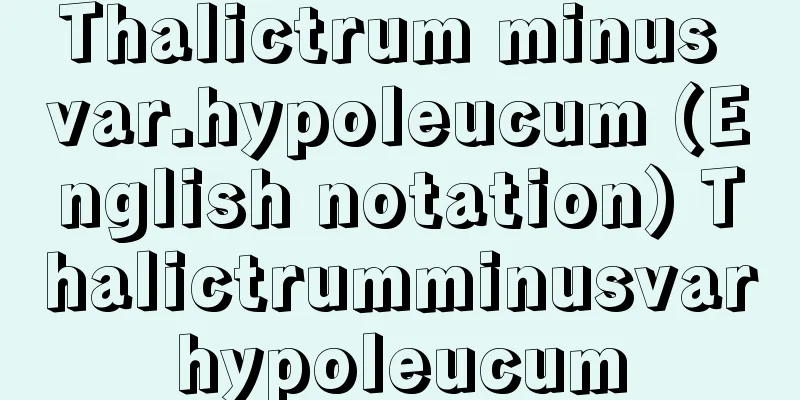Dialectical theology (English: Dialektische Theologie) German

|
This was a Protestant theological movement that arose mainly in Switzerland and Germany after World War I. It marked a breakthrough for Christian theology to transcend the framework of modernism and take on a contemporary perspective. Modern liberal theology in the late 19th century was based on the ideas of F. E. D. Schleiermacher and was suited to the demands of modern intellectuals and bourgeois society. However, when capitalism revealed its internal self-contradictions and class struggle and imperialist war broke out, it lacked the power to criticize them or point the way to a solution. The Epistle to the Romans (1919, revised second edition 1922) written by Karl Barth, a pastor in the small Swiss industrial village of Safenwil, had a shocking impact on those who were disappointed by the powerlessness of the church amid the devastation following the war. Barth studied liberal theology under Harnack as a student and started out from there, but he realized that traditional theology could not speak to the souls of the villagers suffering from exploitation and oppression, and he also came into contact with socialism and sought a new direction for theology. This book contains the results of his research. Its central point was to break away from Christianity, which served modern bourgeois society and modern human-centered civilization, and to recover the absolute transcendence of God. This was implied in assertions such as "God is God" and "Let God be God." As a result, theology was able to criticize the contradictions of modern society and the arrogance of modern people under the absolute transcendent God, and to show the way to salvation from failure. Young and talented theologians such as G. Merz, F. Gogarten, and R. Bultmann in Germany, and E. Thurneysen and E. Brunner in Switzerland resonated with this position, and in 1922 they launched a movement by publishing the journal Between Time. God and humans are separated by "infinite qualitative differences" (Kierkegaard), so God cannot be grasped in human words, but the task of theology was to talk about this absolute transcendent God. For this reason, their books and papers, including Barth's Epistle to the Romans, made extensive use of dialectical concepts such as death and life, earth and heaven, positive and negative, sin and salvation, and the positive and negative, as well as terms such as paradox and impossible possibility, which led outsiders to call this "dialectical theology." It was also called "crisis theology" because it emphasized the crisis of culture and the crisis of modern humanity. However, Barth himself used the term "theology of the Word of God" to refer to his theory that centers on the revelation of Jesus Christ as an event in which the absolute, transcendent God speaks to humans. From the start, the movement had the appearance of being united in one bed and having different dreams, and differences in thinking among the central figures soon became apparent. Conflicts arose over the position of existentialism in theology, the merits of natural theology, attitudes toward Nazism, and the relationship between church and state, and the movement was described as being divided like the generals of the Chinese revolutionary movement. In 1933, Barth wrote an essay called "The Separation," and the journal Between Times was discontinued. Barth and Thurneysen published the journal Theological Existence Today, and other members began to walk their own paths. However, their activities have had a direct and indirect influence on a wide range of issues, including the world church unity movement, the Christian peace movement, the issue of Christianity in socialist countries, the debate over demythologization in biblical interpretation, and dialogue with Catholic theology. [Keiji Ogawa] Source: Shogakukan Encyclopedia Nipponica About Encyclopedia Nipponica Information | Legend |
|
第一次世界大戦後スイスとドイツを中心におこったプロテスタントの神学運動で、キリスト教神学が近代主義の枠を乗り越えて現代的展望をもつ突破口となった。19世紀後半の近代自由主義神学は、F・E・D・シュライエルマハーの思想を出発点とし、近代的知識人とブルジョア社会の要求に適合するものであったが、資本主義が内的自己矛盾を露呈し、階級闘争と帝国主義戦争が起こったとき、それを批判し、解決の方向を示す力をもたなかった。大戦後の荒廃のなかで教会の無力に失望していた人たちに対して、スイスの小工業村ザーフェンウィルの牧師カール・バルトの書いた『ローマ書』(1919、改訂二版1922)が衝撃的影響を与えた。彼は学生時代ハルナックの下で自由主義神学を学び、そこから出発したが、従来の神学では搾取と抑圧に苦しむ村民の魂に語りかけえないことを知り、社会主義にも触れて、新しい神学の方向を模索した。その成果を盛り込んで発表したのがこの書である。その中心点は、近代ブルジョア社会と人間中心主義的な近代文明に奉仕するキリスト教から脱して、神の絶対的超越性を回復することにあった。「神は神である」や「神を神とせよ」といった主張は、それを意味する。それによって神学は、絶対的超越神の下で、近代社会の矛盾と近代人の傲慢(ごうまん)を批判し、挫折(ざせつ)からの救いの方向を示すことができるようになった。 ドイツのG・メルツ、F・ゴーガルテン、R・ブルトマン、スイスのE・トゥルナイゼン、E・ブルンナーら、若い有能な神学者がこの立場に共鳴し、1922年に雑誌『時の間に』を刊行して運動を展開した。神と人間は「無限の質的差異」(キルケゴール)に隔てられているから、神を人間のことばでとらえることはできないが、そのうえでなお、この絶対的超越神について語ることが神学の課題となった。そのために、バルトの『ローマ書』をはじめ、彼らの著書、論文には、死と生、地と天、プラスとマイナス、罪と救い、正と反といった弁証法的対概念や、逆説、不可能な可能性などの語が縦横に用いられたので、外部の人たちが「弁証法神学」とよんだ。また文化の危機、近代的人間の危機を強調したので「危機神学」ともよばれた。しかしバルト自身は、絶対的超越神が人間に語りかけるできごととしてのイエス・キリストの啓示を中心に据えるものとして、「神の言葉の神学」という表現を用いた。 この運動は、その出発点から同床異夢の様相があり、まもなく中心人物の間の考え方の違いが表面化してくる。神学における実存主義の位置づけ、自然神学の可否、ナチズムに対する態度、教会と国家の関係などをめぐって対立が生じ、中国の革命運動の将軍たちのように分裂したと評された。1933年にバルトは「訣別(けつべつ)」という論文を書き、『時の間に』誌は廃刊となった。バルトとトゥルナイゼンは『今日の神学的実存』誌を刊行し、他の人たちもそれぞれの道を歩み始めた。しかし彼らの活動はその後も、世界教会一致運動、キリスト教平和運動をはじめ、社会主義国におけるキリスト教の問題、聖書解釈における非神話化をめぐる論争、カトリック神学との対話など、広範囲にわたって直接間接の影響を与えている。 [小川圭治] 出典 小学館 日本大百科全書(ニッポニカ)日本大百科全書(ニッポニカ)について 情報 | 凡例 |
<<: Dialectical materialism - dialectical materialism
>>: Dialectics - dialectic English
Recommend
Raw textiles - kiorimono
〘Noun〙 A general term for silk fabrics woven using...
Bauer, G. (English spelling) BauerG
…He wrote De re Metallica and is also known as th...
Regression
Mental development stops and moves in the opposit...
Takuma Eiga
He was a Buddhist sculptor of the Takuma school in...
Avanti (English spelling)
Name of an ancient Indian kingdom and region. Loca...
Catherine [I] - Catherine
The first Russian empress (reigned 1725-1727). The...
Eustachio, Bartolomeo
[Born] 1524? San Severino [Died] August 1574. Foss...
Atmospheric boundary layer
This is an atmospheric layer that is directly affe...
Torenia - Torenia
An annual plant of the Scrophulariaceae family (A...
1 byte code
…ASCII code is composed of 32 control characters,...
Long-legged tick - Long-legged tick
…The narrow-legged mite Cheyletus eruditus , foun...
Parkinsonism
...Parkinson's disease is a disease of unknow...
Saeki clan
(1) An ancient clan in Japan. As the Tomo no Miyat...
Hidden Village - Kakurezato
A utopia said to exist in a secluded area, such a...
"The Diary of Prince Asahiko"
…In the same year, he became the chief priest of ...









